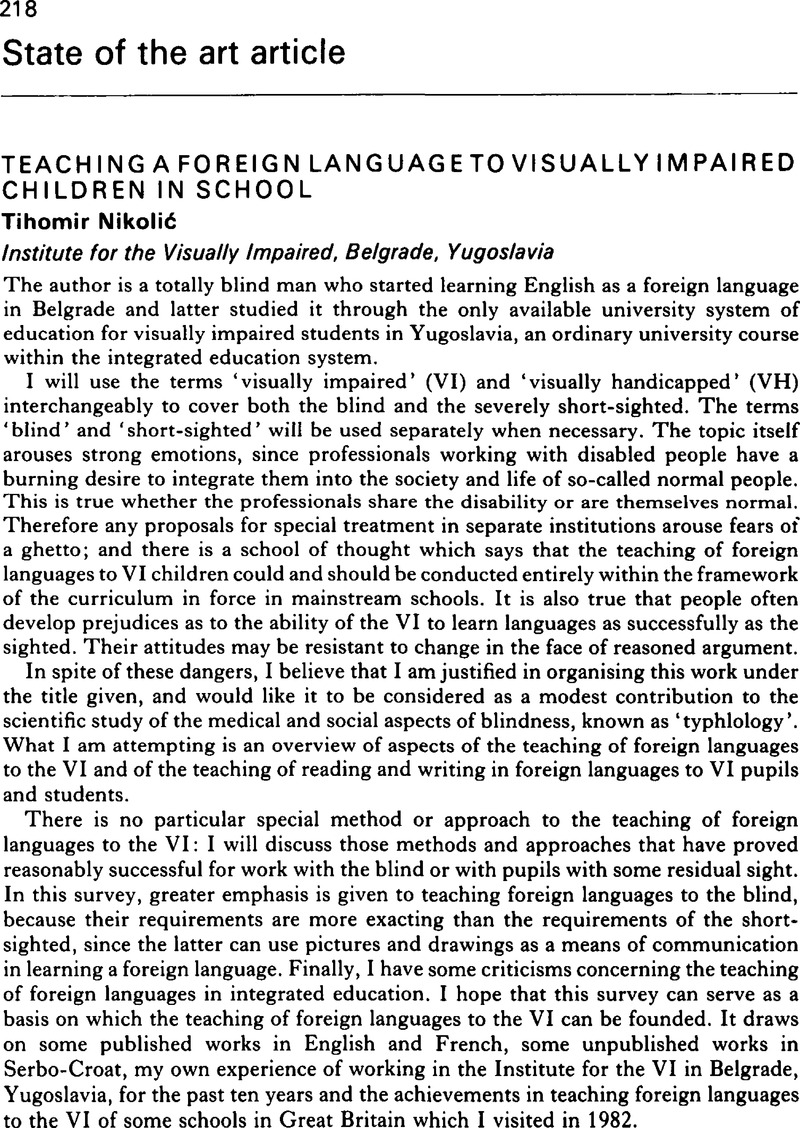Crossref Citations
This article has been cited by the following publications. This list is generated based on data provided by Crossref.
Couper, Heidi
1996.
Teaching modern languages to visually impaired children.
The Language Learning Journal,
Vol. 13,
Issue. 1,
p.
6.
Enjelvin, Geraldine Daniele
2009.
Teaching French to a non‐sighted undergraduate: adjusting practices to deliver inclusive education.
Journal of Further and Higher Education,
Vol. 33,
Issue. 3,
p.
265.
Jedynak, Małgorzata
2011.
Extending the Boundaries of Research on Second Language Learning and Teaching.
p.
263.
GÜL, Abdülmenaf
KAMALI ARSLANTAŞ, Tuğba
YASAN, Nehir
YURDAGÜL, Cemil
and
YILDIRIM, Zahide
2018.
GÖRME ENGELLİ BİREYLERİN YABANCI DİL KELİME BİLGİLERİNİN GELİŞTİRİLMESİ: TASARIM TABANLI ARAŞTIRMA YAKLAŞIMI.
Abant İzzet Baysal Üniversitesi Eğitim Fakültesi Dergisi,
Vol. 18,
Issue. 4,
p.
2071.
Krisi, Miri
Nagar, Revital
and
Knoll, Nira
2022.
Psychological factors involved in the acquisition of a foreign language among students with visual impairments.
British Journal of Visual Impairment,
Vol. 40,
Issue. 2,
p.
196.
Nagar, Revital
and
Krisi, Miri
2023.
External factors and their effect on the learning of English as a foreign language among students with visual impairments.
British Journal of Visual Impairment,
Vol. 41,
Issue. 4,
p.
819.
Polizio, Daniele
and
Szabó, Erzsébet
2024.
Potenzial und Inklusion sehbeeinträchtigter Lernender im DaF-Unterricht mit Fokus auf der Förderung der Lesekompetenz.
Informationen Deutsch als Fremdsprache,
Vol. 51,
Issue. 4,
p.
349.



